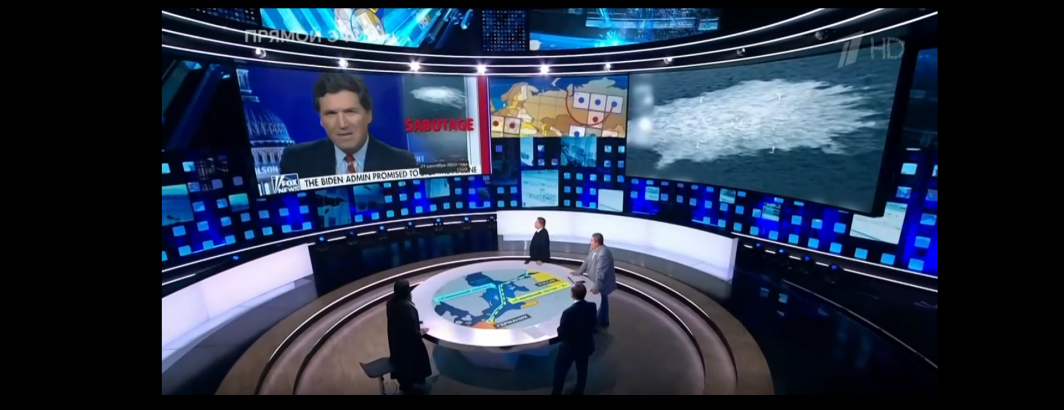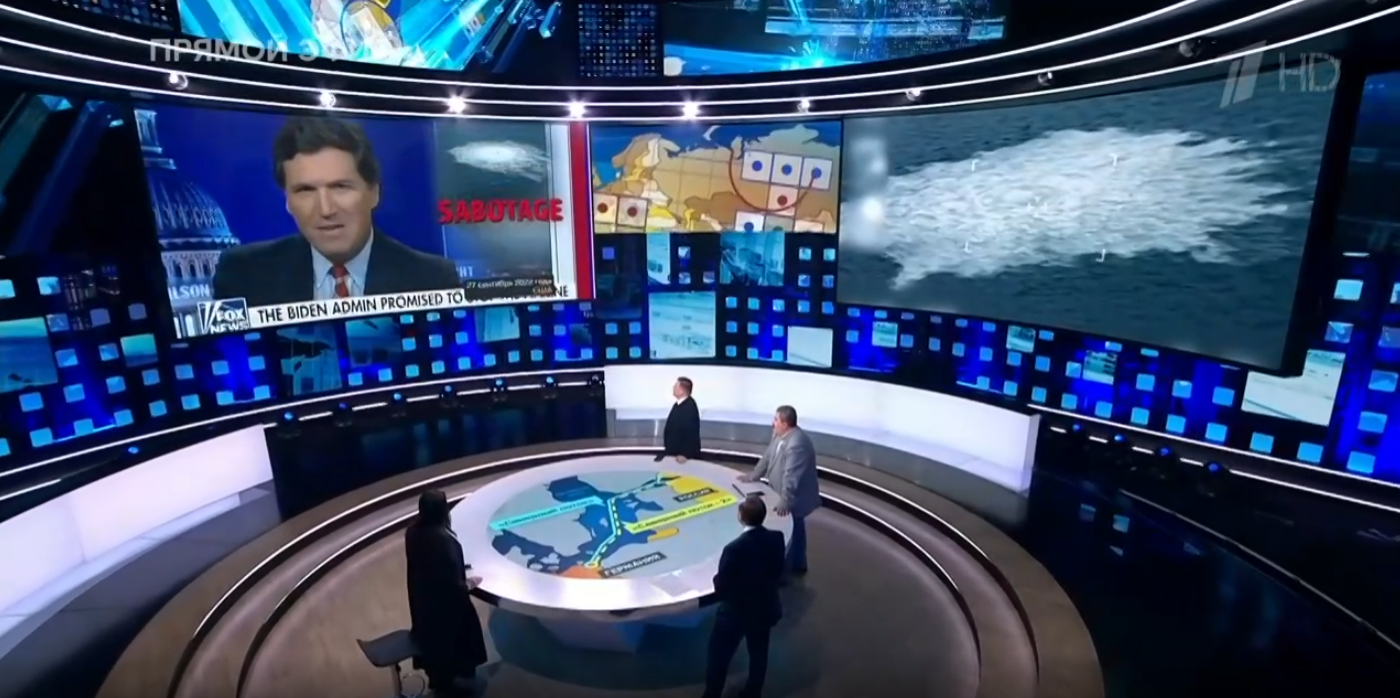
Over the last two days we have demonstrated applying face detection and similarity matching to Russian television news in the Visual Explorer to catalog appearances of Tucker Carlson across Russian media narratives given the significant public interest in better understanding Russian narratives on the invasion. One of the most powerful aspects of facial similarity scoring is its ability to identify appearances of the reference face in complex contexts. For example, facedetect correctly identified Tucker Carlson's appearance in this scene in which he appears on an in-studio screen that is both curved and at an angle to the camera:
Amazingly, it also identified him from the following sequence in which the source video signal was partially damaged, leading to severe MPEG artifacting that makes the image difficult even for a human to immediately identify:
Both of these clips are especially relevant to the concept of human-machine filtering in that a human annotator might have missed the first Tucker Carlson image above given that he makes up such a small portion of the overall image, while the second image would likely not leap out to a human skimming a broadcast at speed.
We are excited about the fundamentally new kinds of possibilities this kind of combined human-machine interaction might enable to triage Russian media narratives of signficant public int.

